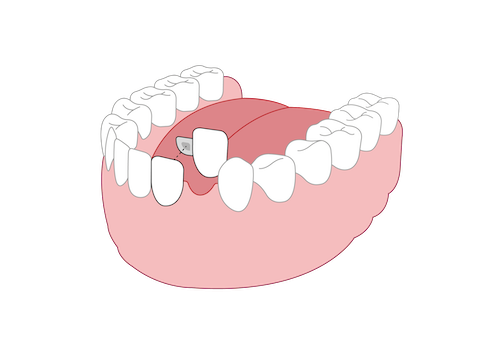5
Keep smiling with a resin-bonded fixed partial denture (bridge)
A fixed partial denture (FPD), also known as a bridge, is used to replace missing teeth. An artificial tooth on a FPD is permanently attached to adjacent teeth. It is like a ‘bridge’ and the natural teeth act as ‘pillars’ to support it.
A resin-bonded fixed partial denture replaces missing teeth by using an adhesive to attach artificial teeth to adjacent teeth, which usually require minimal or no preparation for the treatment.
|
Image
 |
When/why should you choose this option?
- You have one or two missing teeth and only a short-span bridge is needed.
- You would like a fixed replacement for your missing teeth as opposed to a removable option.
- It can be used to replace teeth at the front (incisors and canines) or back of the mouth (premolars and molars). However, a resin-bonded FPD that replaces missing front teeth tends to last longer.
- You have strong, healthy teeth with good bone support for the artificial teeth to attach to; your dentist will call these abutments or abutment teeth.
- A major advantage of a resin-bonded FPD is that the abutment teeth usually require minimal or no preparation, meaning the original tooth structure remains mostly intact.
- It seldom requires anaesthetic; therefore, it may be appropriate for patients who are apprehensive of dental treatment.
What do you need to be aware of?
- Over time, the adhesive holding it in place can weaken, causing the bridge to break off or become loose.
- It can be more difficult to keep the bridge plaque free, putting the abutment teeth at greater risk of caries and gum disease. Extra care is necessary to avoid this.
- The tooth-coloured material on the surface of the bridge may chip.
- Natural teeth change colour with age, which can make them look different from the bridge over time.
- Sometimes bridges that are attached with a metal wing may darken the adjacent tooth, especially when used on front teeth.
What will you need to do to improve your chance of long-term success?
- Good oral hygiene is essential to help prevent problems. Brush your teeth twice a day with a toothpaste containing at least 1,100 ppm fluoride if your risk of dental caries is low.
- You also have to clean under the false tooth every day and between your teeth. This will be more difficult around the FPD as the artificial tooth is fixed to the teeth next to it. Ask your dentist about special flossing or brushing tools to make it easier.
- Eat a well-balanced diet that is low in sugar.
- Your dentist will assess your risk and need for periodic review. This might be between 3-12 months depending on his/her recommendation.
What if there are problems?
- There may be different solutions available, according to your individual situation and problem. For example:
- if you develop caries and gum disease, your dentist may remove the caries around the bridge and work with you to improve your oral hygiene;
- if the bridge comes dislodged, it may be possible to glue it back into place;
- if the bridge repeatedly comes away, your dentist may suggest an alternative option, such as a conventional FPD;
- if there is a mismatch in colour between your natural and artificial teeth, whitening the natural teeth may be the easiest solution, if your natural teeth respond to whitening.
- You and your dentist can agree on the best plan of care for you.
What other factors do we need to consider?
- Invasiveness of procedure: Resin-bonded FPDs are a minimally invasive option for replacing missing teeth.
- Treatment fees: It can be a less expensive option compared to implant replacement and a conventional FPD.
How does this option affect you?
Resin-bonded bridges offer a sound, minimally invasive way to restore missing teeth and oral function, and can provide good aesthetics.